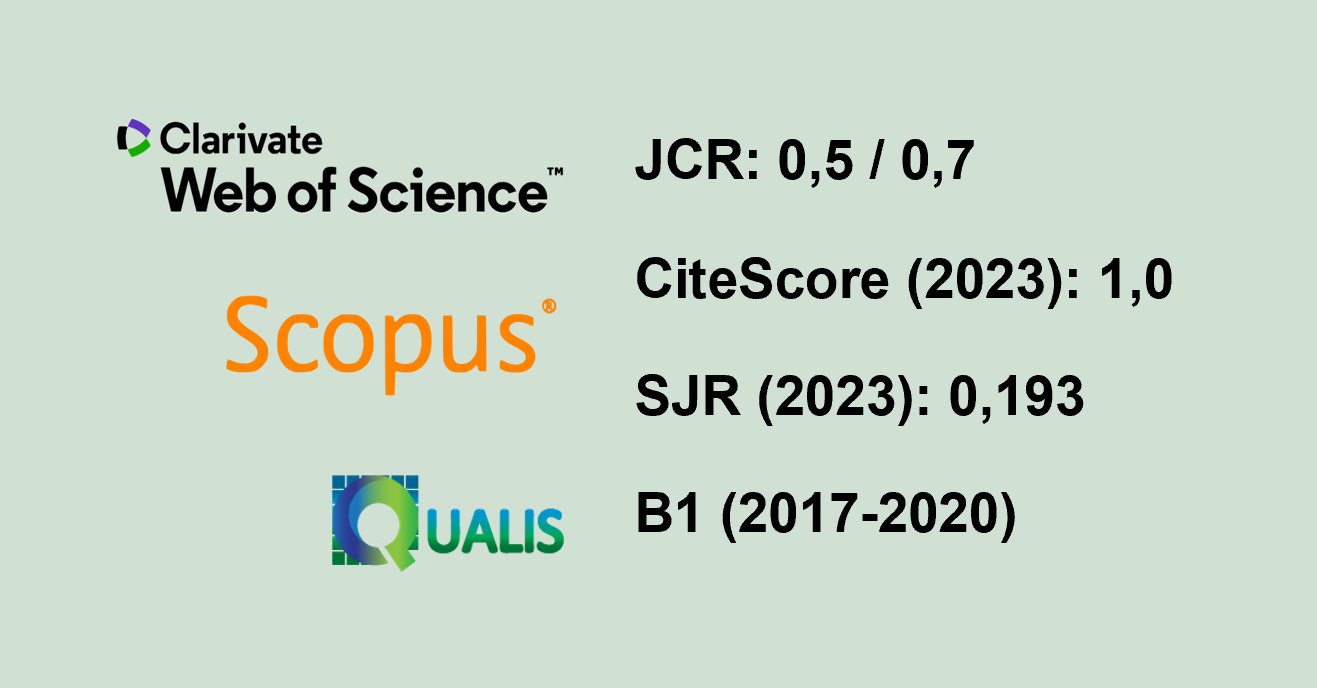PLANTING DENSITY AND INITIAL GROWTH OF TWO TREE SPECIES ADAPTED TO THE SEMI-ARID REGION
Resumo
Planting densities influence several aspects of forest formation, including management practices, timber yield, quality, and extraction, and consequently its production costs. The objective of this study was to evaluate Mimosa caesalpiinifolia and Gliricidia sepium growth as a function of planting density (400, 600, 800, 1000, and 1200 plants ha-1) and plant age. The species were evaluated every 90 days for plant height (PH), crown diameter (CD) and root collar diameter (RCD) (10 cm above the ground), with the first evaluation performed at 90 days and the last at 720 days. When plants were one year of age and beyond, evaluations were conducted also for stem diameter at breast height (DBH) (1.30 m above the ground). A randomized block design with split-plots and three replicates was adopted. Species were assigned to plots, planting densities were assigned to subplots, and evaluation ages were assigned to subsubplots. The four traits in both species had their values decreased as planting density increased, but continually increased as plant age increased. For PH and RCD there was an alternation between species superiority, with gliricidia being superior to sabiá at some ages, while the opposite occurred at other ages. As to CD the species only differed in the last measurement, gliricidia being superior. With regard to DBH, gliricidia was superior starting from the second measurement. There was an effect of the species × ages interaction for the four traits and also an effect of the densities × ages interaction for CD and DBH.
Keywords: Mimosa caesalpiinifolia Benth, Gliricidia sepium (Jacq.) Steud and Caatinga.
Downloads
Publicado
Como Citar
Edição
Seção
Licença
Todos os autores concordaram com a submissão do trabalho à Revista Árvore e concederam a licença exclusiva para publicação do artigo. Os autores afirmam que se trata de um trabalho original, e que não foi publicado anteriormente em outros meios. O conteúdo científico e as opiniões expressas no artigo são de responsabilidade total dos autores e refletem sua opinião, não representando, necessariamente, as opiniões do corpo editorial da Revista Árvore ou da Sociedade de Investigações Florestais (SIF).




